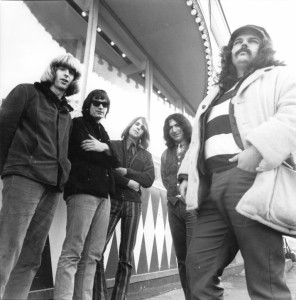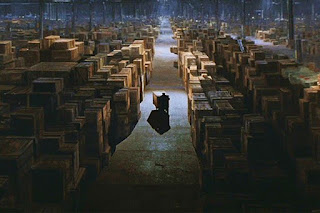Unit 5 - Web Design Comments and Thoughts
My Thoughts on the Readings
- This section's readings and video identify useful and important considerations for designing and developing a website (I did not know the difference between the two). You must keep the reader in mind, unless it is a vanity project just for your own viewing or to store/record info/data. We have all seen "bad" websites that are hard to read, annoying to navigate, or painful to look at.
- The web has a lot of resources and formats/guides to help with design, but no one standard rules, and the creator can use whatever meets his or her needs. There are many tools and applications to aid in web design, and historians can learn gritty technical details, utilize user-friendly programs, or even outsource their sites. If a historian values their time writing, teaching, researching, etc... over learning to code or maintaining a server, these are good options, and with continuing developments, the options will probably get better and cheaper.
- I assume ADA/Section 508 compliance is an afterthought to many web designers (it was to me sadly), but I am glad that the text and the course include this topic. We must remember that not everyone can read or hear the media on websites, so we should consider ways and means to share this data to a wider audience. The authors also point out that these considerations should make your site easier for everyone to read and use.
- I do not have web design experience, so I found the readings on the popular and available tools interesting. It seems that many users experience a lot of trial and error unless they have specific design training, or invest in professional (aka expensive) software. This is an area that I need to research further.
My Design Analysis of Unit 4 Sites
- The Avalon Project has a simple design, which serves to direct readers to the information that they need. I like the simplicity of the site and its colors work well. It isn't trying to attract viewers, it is doing its job.
- The April 16 Archive has easy to find search and database functions. It is a somber topic, and the site does not add any unnecessary distractions.
- Romantic Circles is overwhelming in its design at first glance. It has a lot of graphics and colors, and a lot of options/functions for the reader. Once you start viewing its details, though, it seems well designed and ordered.
- The American Memory site is simple to use and view, which makes sense in light of the ADA/Section 508 requirements for a government agency (the Library of Congress). Like the authors note, this simplicity makes it easy to use.
- Lascaux is a beautiful site, but it is confusing and takes some time to figure out the navigation. Once you understand the site's layout; though, it is very interesting.
Possible Web Projects
I am enjoying using this blog, so I may continue it after the course. I like to read books (many genres) and could create a review website or blog. These would not require significant software or funding, and would focus on my personal interests.
My Thoughts on Cohen and Rosenzweig, Chapter 2
Books and papers are fixed once they are printed and "fixed." A website can change, it can vanish, its file can become corrupted, etc... Barring an accident or disaster (or supernatural powers), the book on your shelf should be there when you wake up. Your website may not.
Creators must match their technology to the purpose of the site. A simple database or blog may not need professional PhotoShop or Dreamweaver software.
Web designers should think like architects when designing their sites.
The authors ask a very important question, do you even need a website? Every project may not need a website, or may not be worth the time required to build/maintain one.
The authors make a good analogy. Though it is nice to read Dante in Italian, is it worth the time and effort to learn Italian when translations already exist? This principle applies to web design tools, though like learning the native language, you would have a better understanding and control if you learned the coding.
I never really noticed, but the authors are correct, many sites do not use audio or video well.
Creators must assess and plan for funding their projects. If it is a free blog with limited media and views, this isn't a major concern. If your site turns into a major success with thousands of views and graphics, you may have unexpected bills to cover.
My Thoughts on Cohen and Rosenzweig, Chapter 4
Everyone is a professional critic for web pages, and we all think we could do better.
Viewers skim and scan sites before committing and reading further.
Viewers want easy and logical sites, hence "Don’t Make Me Think."
Historians must balance ease of use and reading to their mission and purpose to record/share history. There is a fear not to "dumb down" the material while making it accessible.
Great point: "Yet done properly, graphical sophistication and occasionally even challenging design can help place historical materials and ideas in formats that solicit powerful responses from viewers. Put succinctly, our rallying cry on the web must therefore be: enable and inspire me to think about and grasp the past."
The viewer's expectations impact their view of the site. If it is a local organization or a personal website, they may have low expectations, but if it is a national organization or a celebrity/expert, they may feel let down if the site is not well designed.
Creators must resist the temptation to overuse text and graphics.
Navigation is a key concern, and it should be intuitive and obvious to the viewer.
Four keys to web design, per Williams and Tollett: contrast, proximity, alignment, and repeat.
I did not know there was such a serious debate on the value of text styles. Some are less serious, but are easier to read.
There is a debate on "chunking" text to keep it short and easy to read, versus showing full, long texts. I have gotten used to reading books on my Kindle/IPad, but I still prefer shorter reading on the computer (it is easier on my eyes).
Designers must consider easy printing of their sites/content. We have all tried to print an interesting article or page, and found it illegible or gibberish.
True point: "Moreover, we believe in the simple proposition that good writing produces willing readers, regardless of the medium."
Designers must consider the use of images in backgrounds (hard to read text) and how to use smaller images to help with navigation. The Amiens Cathedral Project site does this well.
ADA/508 compliance is a critical point, and is important to ensure all readers can access your material.


Excellent comments here. ADA compliance it tricky with websites. At an earlier time many years ago, all of my web pages were ADA compliant, but as html has evolved, ADA compliance also changes, and it is a lot of work to update.
ReplyDeleteThere is a lot in the reading about design and quite a few links to design information. The important point to remember is that design always derives from purpose. And so the Amazon design is quite a bit different than the design of one of my notes pages for the course.